


Chinese brands double down on HK: How can advertisers cope with the marketing shift?
share on
Recently, Chinese brands such as JD.com, Taobao and Keeta have been ramping up their marketing investments in Hong Kong. JD.com’s limited-time service “買貴就賠”is a continuation of the HK$1.5 billion investment announced in September last year to expand into the Hong Kong market.
Meanwhile, in February, Taobao Hong Kong partnered with local home improvement platform Papabo to launch its first furniture and lifestyle superstore in Hong Kong. This store has adopted an online-merge-offline (OMO) operating model, designed to provide local consumers with a new shopping experience.
Following the shutdown of Deliveroo Hong Kong, its competitor Keeta has launched various promotional campaigns for Hong Kong consumers to step up its game. Since its arrival in Hong Kong less than two years ago, Keeta has seized 43% of the food delivery market share in Hong Kong in March 2024 and has become the largest food delivery service provider by order number in the city, according to a report by alternative data provider Measurable AI.
On the other hand, Chinese QSR brands such as Guming, Home Original Chicken and Green Tea are preparing to list in Hong Kong, highlighting strong investor interest in the sector, according to multiple reports such as Reuters.
According to SCMP, Guming Holdings aimed to raise up to HK$1.58 billion (US$202 million) from a Hong Kong initial public offering (IPO) earlier this year. The company said the funds would be used to enhance supply chain capabilities, branding and consumer engagement efforts and for other general corporate purposes.
Meanwhile, Home Original Chicken, handed in its application to the Hong Kong stock exchange in January, with the funds being used to enhance its supply chain, expand its restaurant network and improve technologies, among other purposes. The company had proposed to raise 1.2 billion yuan (US$164 million) in its previous applications to the Shanghai Stock Exchange, before withdrawing its submission in August.
Opportunities for marketers
As Chinese brands increasingly adopt localised strategies to connect with Hong Kong consumers, the real opportunity for marketers lies in understanding Hong Kong’s unique cultural landscape, according to Shufen Goh, president, APAC at MediaSense and co-founder of R3.
“While language—Cantonese and English are widely spoken in Hong Kong, and Mandarin dominates in mainland China, along with other local dialects—is an important consideration, the challenge goes beyond mere translation. Hong Kong’s fusion of Eastern and Western influences shapes distinct consumer behaviours, humour, and media preferences. What resonates in Mainland China may not have the same impact in Hong Kong. To succeed, brands should navigate these local nuances while staying true to their core identity,” she added.
Marketers play a crucial role as cultural bridges, helping brands move beyond translation to tap into local values, humour, and tone, Goh added. “This might involve incorporating Hong Kong-specific slang or design elements to make subtle changes that can significantly influence how a brand is perceived. Additionally, focusing on popular platforms in Hong Kong—such as Facebook, Instagram, and LIHKG (連登)—and using real-time feedback to optimise messaging can help brands leverage data-driven insights to engage their target audience effectively.”
For retail marketers, it's a golden opportunity to partner with the Chinese platforms (Tmall Global, JD Worldwide) and leverage China’s booming cross-border eCommerce (CBEC) market estimated at over RMB2 trillion in 2024, said Xen Chia, strategic marketing director at XGATE. "Demand for premium imported goods such as skincare and cosmetics to infant formula and supplements continue to surge as Chinese consumers prioritise quality and authenticity."
“Hong Kong’s global reputation for genuine products, tax-free advantages, and seamless connectivity to mainland China, offers an ideal gateway for CBEC expansion. China’s favourable policies including bonded warehouses, free trade zones, and a low CBEC tax rate of just 9.1% further enhance the opportunity,” he added.
Milton Liao, client president for South China and head of GroupM’s Greater Bay Area, said brands can also leverage the data analytics capabilities these brands often bring to understand the Hong Kong consumer better. Providing valuable insights into local culture, language, and consumer preferences to ensure campaigns resonate effectively is also key. Finally, focusing on the unique benefits and value propositions that these Chinese brands offer to price-conscious Hong Kong consumers will be crucial for success.
How are Chinese brands’ marketing mix different from HK clients?
In their pursuit of rapid market share, Chinese brands are adopting a distinctly sales-driven marketing mix, prioritising immediate conversions through high-impact media buys, such as extensive outdoor and location-based advertising, and creative content that aggressively highlights strong product features and direct value propositions, said Kathy Wong, general manager of We Are Social Hong Kong, who has worked with Chinese clients such as Keeta.
“This contrasts sharply with Hong Kong clients, whose targeting strategies diverge significantly. Hong Kong brands cultivate digital connections with Gen Z, fostering online communities, and typically emphasise long-term brand equity building through storytelling and sustained brand positioning,” Wong added.
Chinese brands are also inherently digital-first and mobile-centric, said Liao. “They prioritise eCommerce and driving online sales. Look at Keeta's promotional campaigns – they're incredibly aggressive and value-driven. And they're masters at building online communities. Taobao's OMO strategy with PapaHome is also a great example of blending online and offline experiences.”
To engage a wider audience, Chinese brands are deeply integrated into local platforms such as WeChat, Douyin, and Tmall, where they create a seamless experience that blends social engagement with direct eCommerce, added Goh. “These platforms cater to Chinese consumers’ preference for instant, in-platform purchases. Influencer marketing in China is heavily shaped by user-generated content, particularly trends like grass-planting (種草) and store visiting (探店).
In fact, social media plays a pivotal role in the average Chinese consumers' purchasing journey. According to PwC’s Voice of the Consumer Survey 2024 China report, 71% of Chinese mainland and 70% of Hong Kong consumers agree that they use social media to discover new brands, while 63% of Chinese consumers and 43% of Hong Kong consumers purchase products directly via social media.
Grass-planting involves subtly planting the desire for products through authentic, peer-driven content on platforms such as Xiaohongshu and Douyin, creating a more relatable connection with consumers, she said. “Store visiting refers to visiting physical stores and sharing the experience on social media, offering a virtual preview of the store's atmosphere, products, and services. Both trends highlight the trust consumers place in peer recommendations over KOL endorsements, emphasising the power of user-generated content in influencing purchasing decisions and building brand trust.”
Do agencies need to tweak their strategies?
To attract advertising dollars from new Chinese clients, Hong Kong agencies must prioritise agility and a deep understanding of value-driven consumer needs, according to Wong, adding that agencies with existing China footprints offer a strategic advantage, facilitating a holistic approach that aligns with Chinese client expectations and ensures brand synergy.
“Key elements include rapid adaptation to market changes, delivering high-impact creative strategies, and proactive identification of consumer pain points. By providing innovative, attention-grabbing solutions that clearly showcase a strong value proposition, agencies can effectively meet the demands of these fast-paced clients.”
To keep up with the trend, industry players now need to become cross-border experts, said Liao. “It's no longer enough to think of just Hong Kong; a GBA strategy is essential. That means understanding the Chinese digital landscape – WeChat, Douyin, Xiaohongshu, the whole ecosystem. Data fluency is also crucial. These brands are data-driven, so agencies need to demonstrate their ability to deliver measurable results. And of course, cultural sensitivity is paramount.”
On the other hand, Goh said agencies should focus on showcasing their deep understanding of the Hong Kong market, rather than simply tweaking strategies to attract new clients. “Brands entering Hong Kong should seek local partners who can navigate the region’s unique consumer behaviours, cultural nuances, and media landscapes.”
“Instead of acting as service providers, agencies should position themselves as strategic partners at the centre of brand growth and localisation efforts. By demonstrating cultural intelligence and expertise in the Greater Bay Area, they can build trust with Chinese brands looking to create meaningful connections. Cultural intelligence is key,” she added.
Join us this coming 17 June for #Content360 Hong Kong, an insightful one-day event centered around responsible AI, creativity VS influencers, Xiaohongshu and more. Let's dive into the art of curating content with creativity, critical thinking and confidence!
Related articles:
Taobao HK partners with Papabo to launch first OMO furniture superstore
KeeTa introduces ‘membership-free’ plans to grow customer base
share on
Free newsletter
Get the daily lowdown on Asia's top marketing stories.
We break down the big and messy topics of the day so you're updated on the most important developments in Asia's marketing development – for free.
subscribe now open in new window
